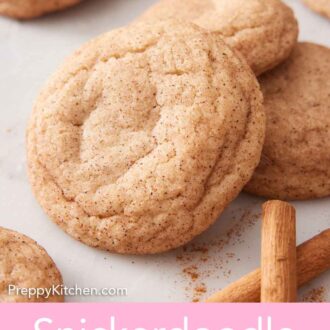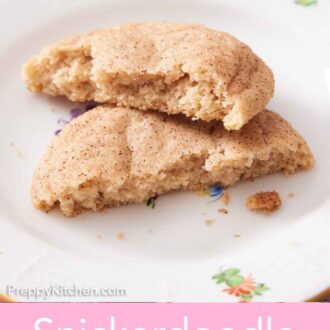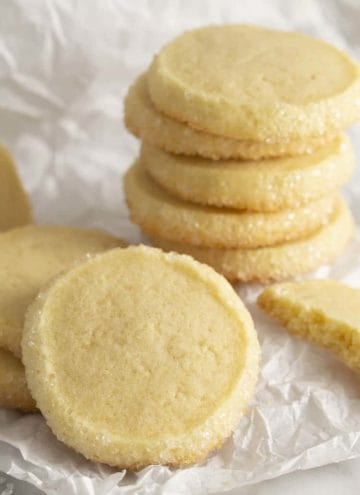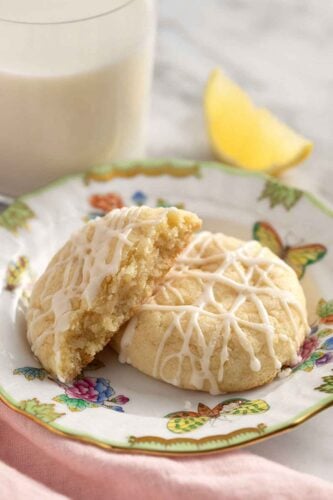Try this classic Snickerdoodle recipe when you want a sugar cookie with extra oomph. Flavored with a generous amount of cinnamon, this classic cookie is a favorite around the holidays. But they’re so quick and easy to throw together that you could easily make them whenever the mood for cookies strikes!
One of my favorite things about my chewy snickerdoodle recipe is that you don’t need to refrigerate the dough, which cuts down the prep time drastically. In fact, you can have a batch of these sweet, buttery cookies ready in 20 minutes! For more easy cookie recipes, try my easy oatmeal raisin cookies, spritz cookies recipe, and my recipe for peanut butter cookies.
What You Need to Make this Recipe
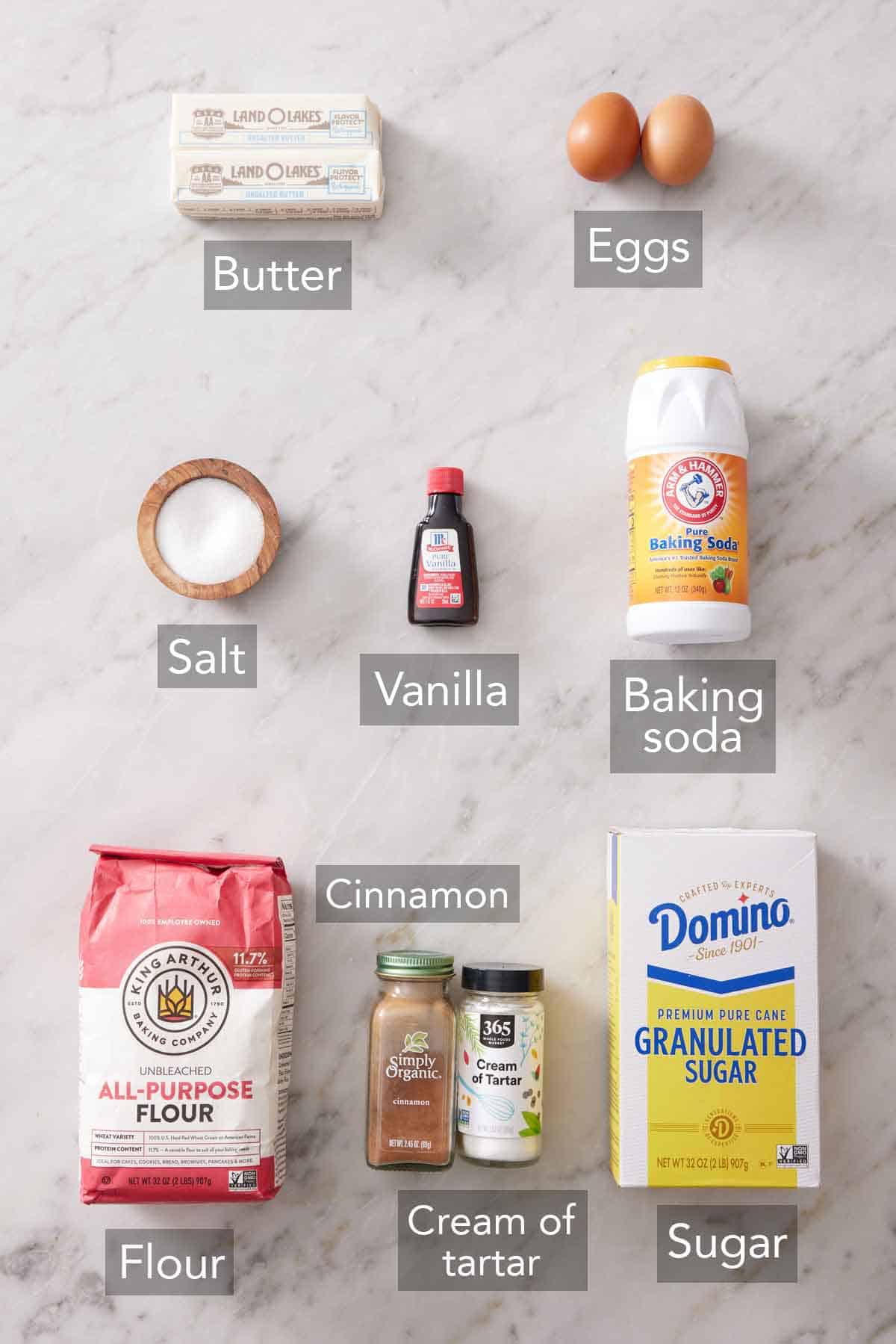
Cream of tartar — cream of tartar is a vital ingredient for soft, chewy cookies. And, when combined with baking soda, it helps the snickerdoodle cookies puff up. Cream of tartar also gives this classic snickerdoodle recipe the hint of tang that these cookies are known for.
Cinnamon — you need cinnamon for the cookie dough, and to create a delicious cinnamon-sugar coating.
Butter — soften 1 cup of unsalted butter. If you only have salted butter on hand, reduce the amount of salt in the dough by ½ teaspoon (so you’ll only use ¼ teaspoon of salt).
Sugar — you only need granulated sugar (regular white sugar) for these cookies.
Eggs — take the eggs out of the fridge about 30 minutes before you start baking to bring them up to room temperature
How to Make this Snickerdoodle Recipe
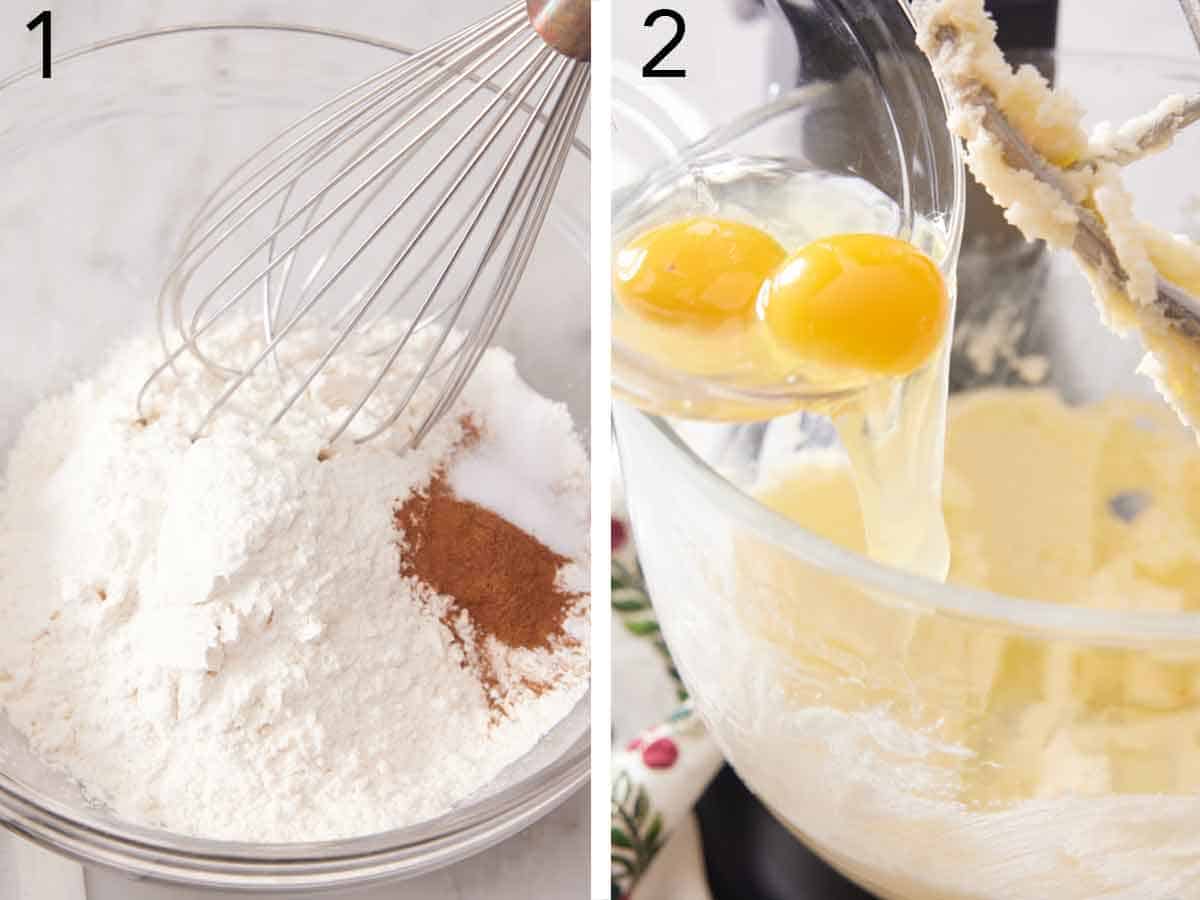
1. Whisk together the all-purpose flour, baking soda, cream of tartar, cinnamon, and salt in a medium bowl.
2. In a large mixing bowl (or the bowl of a stand mixer fitted with a paddle attachment), beat the sugar and softened butter on medium speed until light and fluffy. This will take about 3 minutes. Add the eggs one at a time, beating well before adding the second egg. Scrape down the sides of the bowl and add the vanilla extract.
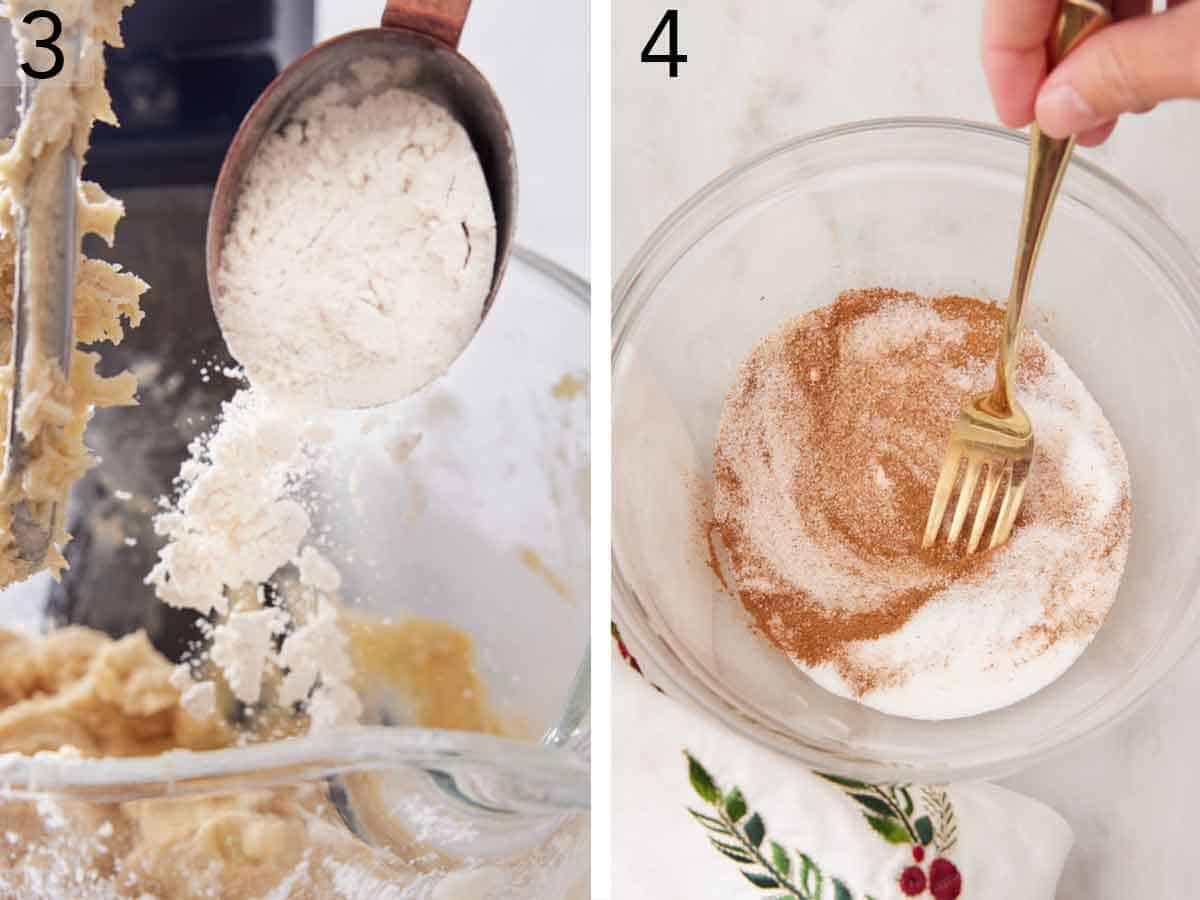
3. Set the mixer to low speed and gradually add the dry ingredients to the wet ingredients. Beat until just combined. Scrape the sides down and incorporate any remaining dry bits.
4. In a small bowl, mix granulated sugar and ground cinnamon together to make the cinnamon-sugar coating for the cookies.
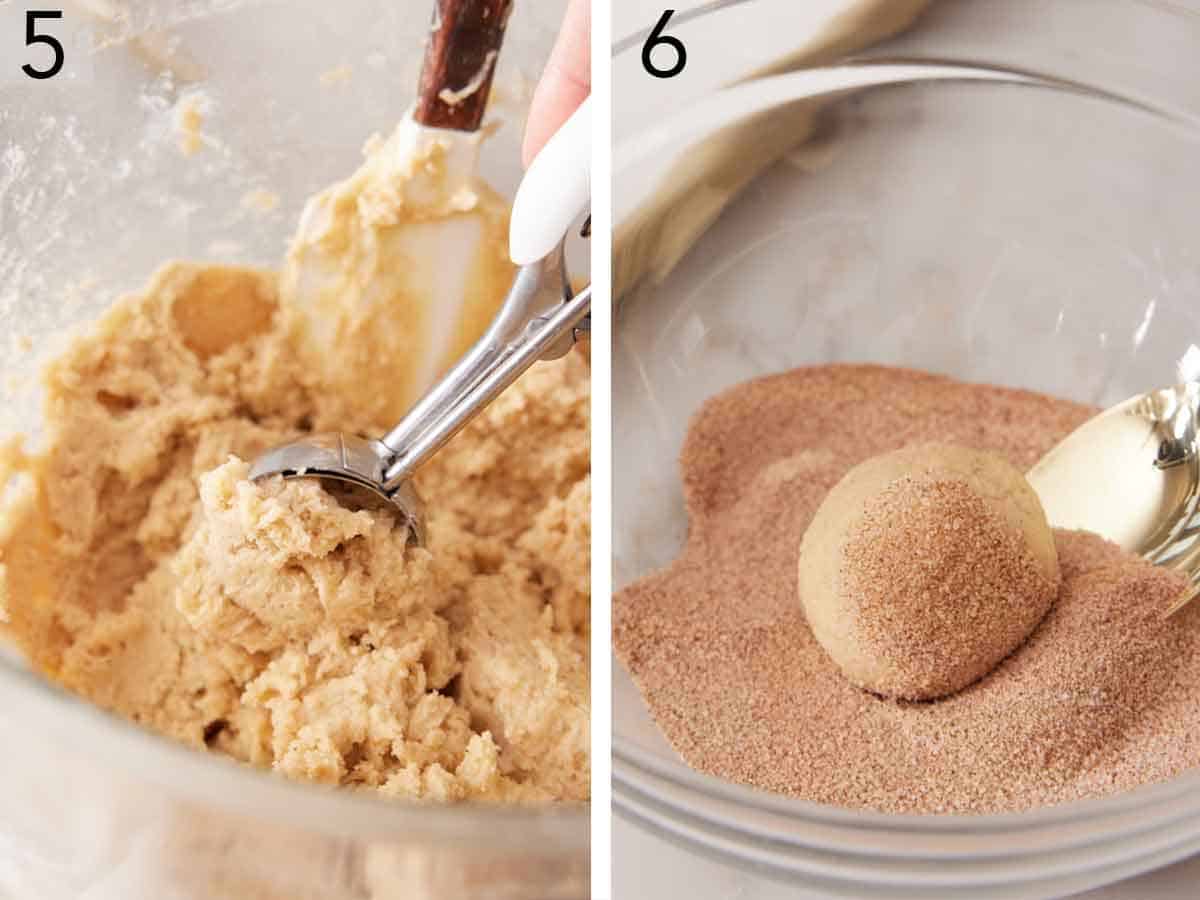
5. Use a cookie scoop (I used a #40 scoop) or tablespoon to portion out the cookie dough into 1½ tablespoon-sized balls.
6. Roll the dough between your palms to create smooth balls, then coat them in cinnamon sugar. Line two baking sheets with parchment paper. Place the cookie dough balls on the baking sheets 2 inches apart so they have plenty of room to spread. Bake at 375°F for 8 to 10 minutes, or until puffed and just starting to wrinkle around the edges. Let the cookies cool on the cookie sheet for 5 minutes before transferring them to a wire rack to cool completely.
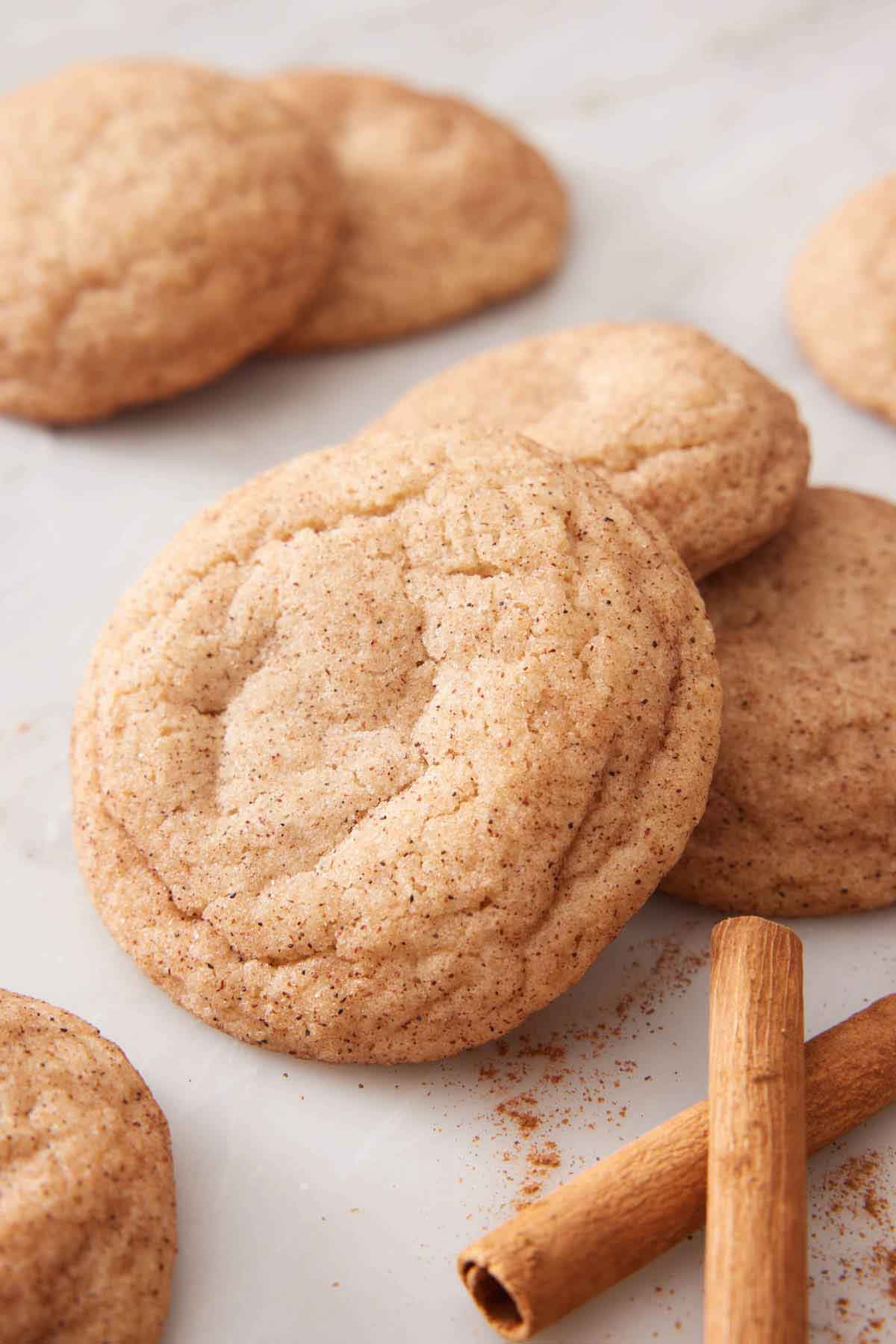
Pro Tips for Making this Recipe
- Use room temperature eggs. Room temperature eggs incorporate much better into the creamed butter and sugar.
- Weigh the flour. Adding too much flour is a common mistake and yields dry, floury cookies. The easiest way to use the correct amount of flour is by using a kitchen scale. If you don’t have one, fluff the flour with a spoon in its container, sprinkle it into your measuring cup, and use a knife to level it off. Don’t scoop directly from the flour container, as you will likely scoop too much.
- If you prefer a slightly chewier, less puffy cookie: Substitute one of the eggs for just an egg yolk and replace ¾ cup of the granulated sugar with light brown sugar (165g).
- How to manage too-sticky dough: The dough will be soft when rolling it between your palms, but it shouldn’t stick to your hands. If the dough is too sticky, chill it for 20 minutes and then scoop and roll into balls. Or scoop, chill for 10 minutes, then roll into balls and coat in sugar.
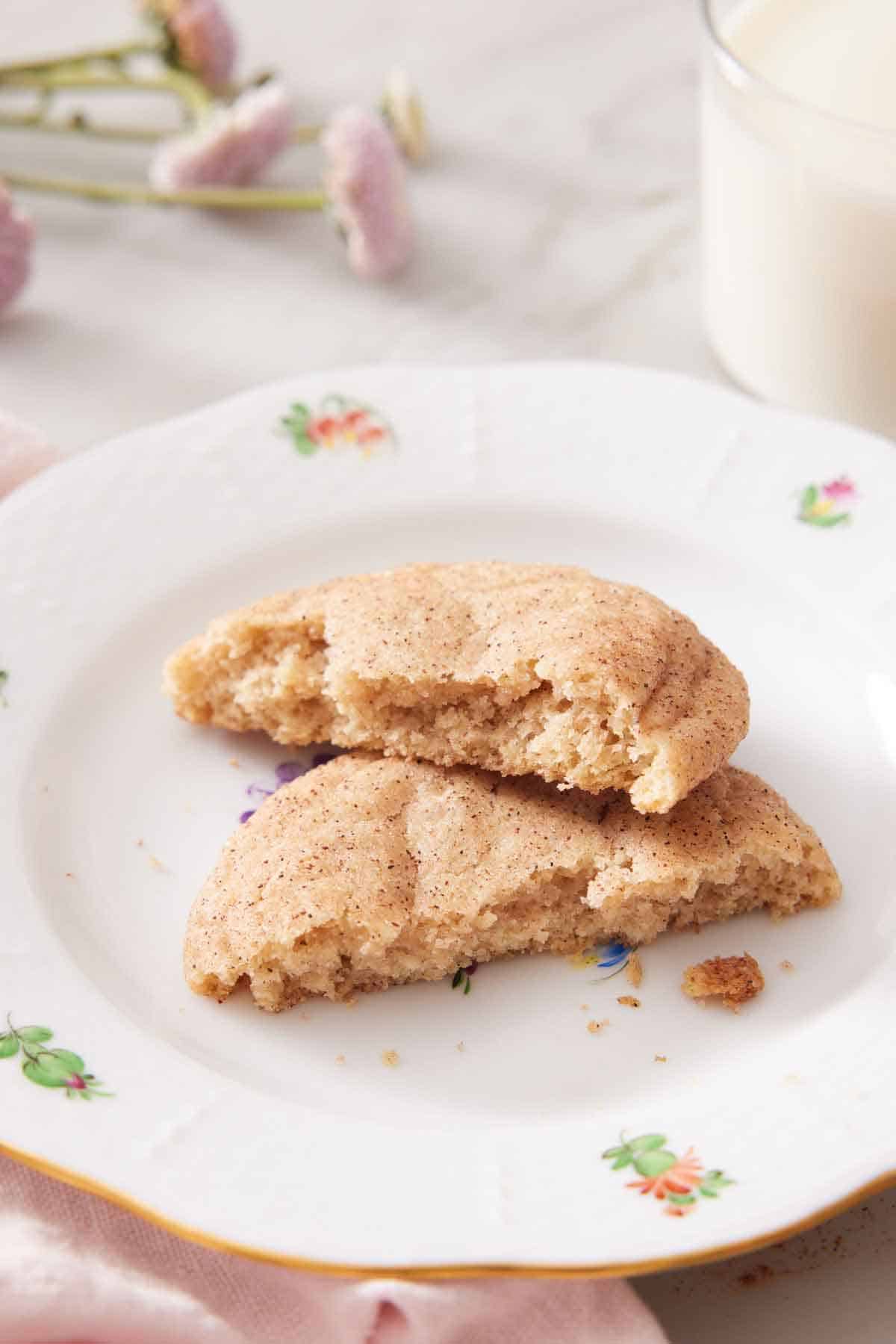
Frequently Asked Questions
While this explanation isn’t agreed upon by everyone, the name could be derived from the German word Schneckennudeln, which refers to a variety of snail-shaped pastries.
Cream of tartar is an important ingredient for the best snickerdoodle recipe. Without it, your cookies won’t have a snickerdoodle’s signature tangy flavor, nor will they be as chewy as they should be. In a pinch, you can use lemon juice instead.
Yes, you can freeze the dough. Roll the dough into balls and chill in the fridge or freezer until solid. Transfer the cookie dough balls to a freezer bag or freezer-safe container and freeze for up to 3 months. The next time you’re in the mood for snickerdoodle cookies, simply thaw the dough balls for about 20 minutes at room temperature. Then roll them in cinnamon sugar and bake! You’ll likely need to add a minute or two to the baking time to account for the colder dough.
While snickerdoodles disappear in the blink of an eye in my house, they will keep in an airtight container at room temperature for about 5 days.
You can freeze snickerdoodles after they’re baked for up to 4 months. Allow them to cool completely before transferring them to a freezer bag or freezer-safe container. Let them thaw for a few hours on the kitchen counter, or overnight in the refrigerator, before enjoying them!
If you’ve tried this snickerdoodle recipe, then don’t forget to rate the recipe and let me know how you got on in the comments below, I love hearing from you!
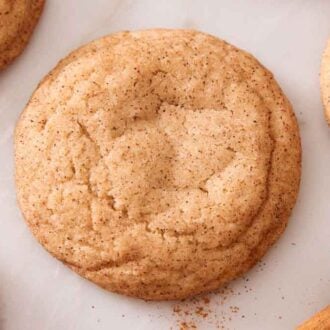
Snickerdoodle Recipe
Video
Equipment
- Mixing Bowls
- Electric hand or stand mixer
- Baking Sheets
- Parchment paper or silicone baking mat
Ingredients
For the Cookies:
- 2¾ cups all-purpose flour (330g)
- 1 teaspoon baking soda
- 1 teaspoon cream of tartar
- 1 teaspoon ground cinnamon
- ¾ teaspoon salt
- 1 cup unsalted butter softened (226g)
- 1 cup granulated sugar (200g)
- 2 large eggs room temperature
- 2 teaspoons vanilla extract
For the Cinnamon-Sugar Coating:
- ⅓ cup granulated sugar (50g)
- 1½ teaspoons ground cinnamon
Instructions
- Preheat the oven to 375°F. Line two ungreased baking sheets with parchment paper.
- In a medium bowl, whisk together the flour, baking soda, cream of tartar, cinnamon, and salt.
- In a large mixing bowl or the bowl of a stand mixer fitted with a paddle attachment, beat the butter and sugar on medium speed until light and fluffy, about 3 minutes. Add the eggs on at a time beating well between each addition. Scrape down the bowl and mix in the vanilla
- With the mixer on low speed, gradually add in the flour mixture and beat just until combined. Scrape the down down and mix in any remaining dry areas.
For the Coating:
- In a small bowl, mix sugar and cinnamon together.
- Use a cookie scoop or tablespoon to portion out the cookie dough into 1½ tablespoons sized balls. Roll the dough in the palms of your hands to create smooth balls, then coat them in cinnamon sugar. Place the dough balls on the cookie sheets 2 inches apart.
- Bake for 8 to 10 minutes or until puffed and just starting to wrinkle around the edges. Let the cookies cool on baking sheet for 5 minutes then transfer to a wire rack to cool completely.
Notes
- Use room temperature eggs. Room temperature eggs incorporate much better into the creamed butter and sugar.
- Weigh the flour. Adding too much flour is a common mistake and yields dry, floury cookies. The easiest way to use the correct amount of flour is by using a kitchen scale. If you don’t have one, fluff the flour with a spoon in its container, sprinkle it into your measuring cup, and use a knife to level it off. Don’t scoop directly from the flour container, as you will likely scoop too much.
- If you prefer a slightly chewier, less puffy cookie: Substitute one of the eggs for just an egg yolk and replace ¾ cup of the granulated sugar with light brown sugar (165g).
- How to manage too-sticky dough: The dough will be soft when rolling it between your palms, but it shouldn’t stick to your hands. If the dough is too sticky, chill it for 20 minutes and then scoop and roll into balls. Or scoop, chill for 10 minutes, then roll into balls and coat in sugar.



